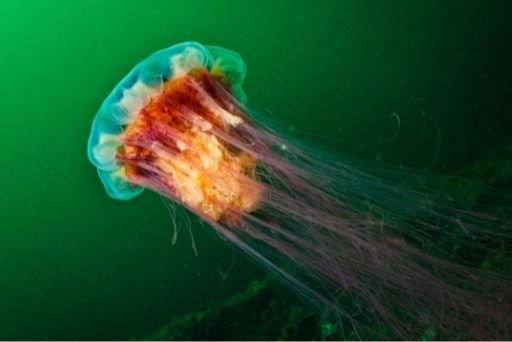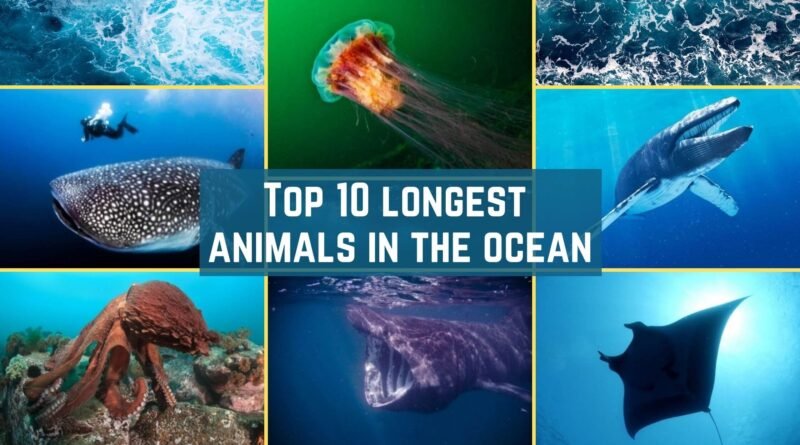Exploring the marine possessions: Here are the top 10 longest animals in the ocean
Standing on the ocean shore and watching the natural habitat of marine animals is itself an enthralling affair. After all, the unceasing beauty of the turbulent ocean life attracts thousands of photographers, ocean lovers, and ardent animal adorers. But whenever the discussion of ocean animals comes into the forefront, the stereotypical thought of whales being the longest ocean animal surpasses the truth. Thus, to offer clarity in your conceptions, here’s breaking down the top 10 longest animals in the ocean.
Outlining The 10 Longest Ocean Animals
Although it’s impossible to demonstrate the total number of underwater species, ocean lovers still get astonished about it. But with time, the continued decrease in many ecosystems’ health (combined with a growing extinction rate) is outpacing species’ capabilities of evolving with the changing conditions of Mother Earth. Although 91 percent of marine species haven’t yet classified, the following are the top ten longest animals amongst the classified ones.

1. Lion’s Mane Jellyfish
Also called the giant jellyfish, it’s the largest ocean animal having a tentacle length of 120 ft. (36.6m). 94% of its body is made of water, and it can live up to 12 months (as per its lifespan). It’s discovered in the colder Pacific, Atlantic, North Sea, and Baltic regions.
2. Blue Whale
Comprising a length of 108.27 ft. (33 m.), blue whales are the largest animals on the planet. They are extremely substantially heavier than other ocean animals and weigh around 208 tons. But calling them the second-longest marine animal is just a false narrative.

3. Sperm Whale
Amongst the toothed whales, sperm whales are the largest ones. It would simply be an understatement to call them the largest toothed whales, as these species are the largest toothed predators too. Featuring a length of 78.74 ft. (24m), they consume large squids, sharks, and huge bony fishes.
4) Whale Shark
They are enormous, but studies have revealed that they consume the smallest ocean creatures. Whale sharks feed on fish eggs and small planktons. And as they swim along with their big mouths open, they filter feed. Calling it a filter-feeding and slow-moving carpet shark is, thus, not an overstatement.

5. Basking Shark
Did you know that basking sharks are the second-largest living shark on the planet? And they are also called one of the three plankton-eating species besides megamouth sharks and whale sharks. Having a length of 40.24 ft. (12.27 m), they feed on small planktonic prey. These sharks live in the equator’s southern and northern zones.
6. Giant Squid
Being a species of ocean-dwelling squids, giant squids are found across all oceans on the planet. But if you ask about any one of the spots known for being home to these giant squids, it’s the Newfoundland coast. It’s a perfect example of deep-sea gigantism, given the fact that they can develop themselves in tremendous sizes.

7. Giant Octopus
Having a length of 32.15 ft. (9.8 m), the giant octopus happens to be larger than other species of octopus. In appearance, they are somewhat reddish and can change their color. Much to the surveys so far, they can even change their texture. Referring to it as a huge cephalopod belonging to the Enteroctopus genus is not an exaggeration.

8. Oarfish
These species belong to the tiny family Regalecidae and are extremely elongated and large. In terms of length, they are 26.25 ft. (8 m) tall. They are described as thin and long creatures of the marine world. As per reports, they can weigh around 272 kg. Oarfish can be found in tropical oceans.
9. Great White Shark
They belong to the mackerel shark species that are found on the coastal water surface in the most significant oceans. Notable for its size, it measures 22.96 ft. 7 m.) in length. These sharks are heavy predators and are capable of consuming marine mammals (weighing some hundred pounds). Given their need for traveling for seasonal migration and demanding diet, keeping these sharks in captivity is not logically possible.

10. Giant Ocean Manta Ray
Saying that giant oceanic manta rays are the world’s biggest ray type would not be an overemphasizing statement. Their dwelling is as significant in the subtropical and tropical waters as in temperate waters. They grow to the size of a disc and up to 7 m in length, which is 22.96 ft. They are dorsoventrally flattened and have triangular pectoral fins on each side of the disc.
Footnote
For over centuries, ocean life has enchanted people’s imagination with a lure of mysteries and treasures hidden beneath the endless surface. Even if facets of marine biology remain seldom understood, it’s human minds that want to explore the oceans over and over again. While some ocean discoveries are yet to be explored, we have already been introduced to significant knowledge. And one of them is, these longest ocean animals are the ones who feed the tiniest underwater creatures. Isn’t it enough to describe the beautiful balance of the marine food chain? Oh yes, it is!





